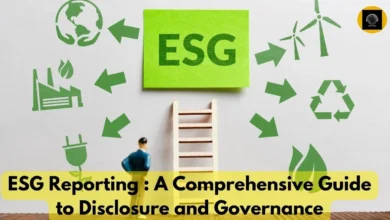Investors Navigate Volatility: A Deep Dive into Strategies Amid Shifting Geopolitical Dynamics
Introduction:
Welcome to a comprehensive exploration of how investors strategically navigate through volatile global markets in response to a continually shifting geopolitical landscape. In this in-depth article, we will delve into the multifaceted factors driving market volatility and examine the adaptive strategies employed by investors to thrive in the face of geopolitical uncertainties.
I. Understanding the Global Financial Landscape:
The complexities of the global financial landscape set the stage for the challenges investors face. Geopolitical dynamics, intertwined with economic factors, create an environment where market volatility becomes inevitable. Investors must grasp the intricate interplay of various elements to make informed decisions.
II. Geopolitical Tensions: A Catalyst for Market Fluctuations
Geopolitical tensions are a primary driver of market volatility. Ongoing conflicts, trade disputes, and political unrest can send shockwaves through financial markets, causing sudden fluctuations in stock prices, commodity values, and currency exchange rates. This section will dissect real-world examples, illustrating how geopolitical tensions translate into tangible market impacts.
III. Policy Changes: Navigating the Economic Policy Landscape
Changes in economic policies, both on a domestic and international scale, introduce uncertainty for investors. We will explore the intricacies of policy shifts, including the impact of trade agreements, regulatory changes, and fiscal policies. By understanding the implications of these changes, investors can position themselves strategically to capitalize on emerging opportunities and mitigate risks.
IV. Global Economic Indicators: Navigating Key Metrics
Key economic indicators such as GDP growth, inflation rates, and employment figures play a pivotal role in shaping investor confidence. This section will analyze how sudden changes in these indicators can provoke market reactions, prompting investors to reassess their investment strategies. A nuanced understanding of economic indicators is crucial for making well-informed investment decisions in a volatile market.
V. Pandemic Impact: The Lingering Effects of COVID-19
The COVID-19 pandemic has left a lasting impact on global markets. Investors continue to grapple with the effects of public health crises, vaccination efforts, and pandemic-related policies. We will explore how the pandemic has reshaped investor behavior and influenced market trends, providing insights into the ongoing challenges and opportunities arising from these unprecedented circumstances.
VI. Adapting Investment Strategies: A Comprehensive Approach
A. Diversification: The Cornerstone of Risk Mitigation
Diversification stands as a crucial strategy for mitigating risks in a volatile market. This section will provide an in-depth exploration of diversification, showcasing how a well-diversified portfolio across asset classes and geographic regions serves as a robust risk management tool. Real-world examples will illustrate the effectiveness of diversification in safeguarding investments.
B. Risk Management: Strategies for Heightened Volatility
Effective risk management becomes paramount during periods of heightened volatility. Investors must reassess their risk tolerance and deploy strategic tools such as stop-loss orders and options hedging. This section will delve into various risk management strategies, offering practical insights into safeguarding portfolios in unpredictable market conditions.
C. Continuous Monitoring: Utilizing Technology for Informed Decision-Making
In the age of technological advancements, continuous monitoring is a key component of successful investment strategies. Investors leverage technology and data analytics for real-time market trend analysis. We will explore how staying informed about market dynamics enables investors to make timely and informed decisions, enhancing their ability to navigate through volatile periods.
D. Long-Term Perspective: Weathering Short-Term Storms
Maintaining a long-term perspective is a hallmark of resilient investors. This section will emphasize the importance of focusing on fundamental analysis and the overall health of the global economy. By adopting a long-term mindset, investors can ride out short-term market turbulence and position themselves to capitalize on opportunities that emerge amidst uncertainty.
VII. Case Studies: Learning from Historical Events
Real-world case studies provide valuable insights into how investors navigated through specific geopolitical challenges. By examining historical events and their impact on financial markets, we can glean lessons from the past to inform present and future investment decisions. This section will present compelling case studies, showcasing successful strategies and highlighting pitfalls to avoid.
VIII. Conclusion: A Roadmap for Investors
As we conclude our exploration, we will recap the key strategies discussed throughout the article. From diversification to risk management, continuous monitoring, and maintaining a long-term perspective, investors can construct a robust roadmap to navigate volatility successfully. This comprehensive guide aims to empower investors with the knowledge and tools needed to navigate the ever-shifting geopolitical landscape and thrive in the face of market uncertainties.
In an era where adaptability is key, investors who understand the nuances of geopolitical dynamics and implement sound strategies will not only weather market storms but also seize opportunities for long-term growth. As the global landscape continues to evolve, staying informed and adopting a proactive approach will be the cornerstone of success for investors navigating the complexities of volatile markets.





